
-
 Dolly Parton's sister calls for fan prayers over health issues
Dolly Parton's sister calls for fan prayers over health issues
-
On Trump's orders, 200 troops from Texas arrive in Illinois
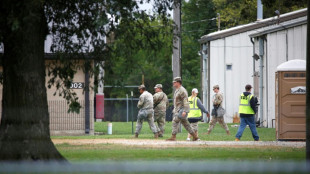
-
 Two bodies found, two missing after Madrid building collapse
Two bodies found, two missing after Madrid building collapse
-
Panthers raise banner as NHL three-peat bid opens with win

-
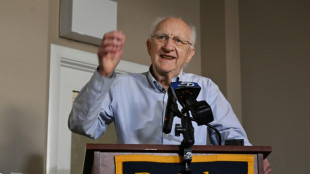 Nobel physics laureate says Trump cuts will 'cripple' US research
Nobel physics laureate says Trump cuts will 'cripple' US research
-
UFC star McGregor suspended 18 months over missed drug tests

-
 Trump talks up Canada trade deal chances with 'world-class' Carney
Trump talks up Canada trade deal chances with 'world-class' Carney
-
Ecuador president unharmed after apparent gun attack on motorcade
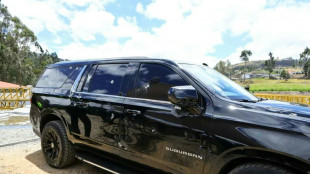
-
 Lyon exact revenge on Arsenal, Barca thrash Bayern in women's Champions League
Lyon exact revenge on Arsenal, Barca thrash Bayern in women's Champions League
-
Trump says 'real chance' to end Gaza war as Israel marks attacks anniversary

-
 Gerrard brands failed England generation 'egotistical losers'
Gerrard brands failed England generation 'egotistical losers'
-
NFL fines Cowboys owner Jones $250,000 over gesture to fans

-
 Bengals sign veteran quarterback Flacco after Burrow injury
Bengals sign veteran quarterback Flacco after Burrow injury
-
New prime minister inspires little hope in protest-hit Madagascar

-
 Is Trump planning something big against Venezuela's Maduro?
Is Trump planning something big against Venezuela's Maduro?
-
EU wants to crack down on 'conversion therapy'

-
 French sex offender Pelicot says man who abused ex-wife knew she was asleep
French sex offender Pelicot says man who abused ex-wife knew she was asleep
-
Trump says 'real chance' to end Gaza war as Israel marks Oct 7 anniversary

-
 UK prosecutors to appeal dropped 'terrorism' case against Kneecap rapper
UK prosecutors to appeal dropped 'terrorism' case against Kneecap rapper
-
Spain, Inter Miami star Alba retiring at end of season

-
 EU targets foreign steel to rescue struggling sector
EU targets foreign steel to rescue struggling sector
-
Trump talks up Canada deal chances with visiting PM

-
 Knight rides her luck as England survive Bangladesh scare
Knight rides her luck as England survive Bangladesh scare
-
Pro-Gaza protests flare in UK on anniversary of Hamas attack

-
 Top rugby unions warn players against joining rebel R360 competition
Top rugby unions warn players against joining rebel R360 competition
-
Outcast Willis 'not overthinking' England absence despite Top 14 clean sweep

-
 Trump says 'real chance' of Gaza peace deal
Trump says 'real chance' of Gaza peace deal
-
Macron urged to quit to end France political crisis

-
 No.1 Scheffler seeks three-peat at World Challenge
No.1 Scheffler seeks three-peat at World Challenge
-
Canadian PM visits Trump in bid to ease tariffs

-
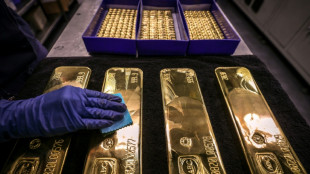 Stocks falter, gold shines as traders weigh political turmoil
Stocks falter, gold shines as traders weigh political turmoil
-
Senators accuse US attorney general of politicizing justice

-
 LeBron's 'decision of all decisions' a PR stunt
LeBron's 'decision of all decisions' a PR stunt
-
Observing quantum weirdness in our world: Nobel physics explained
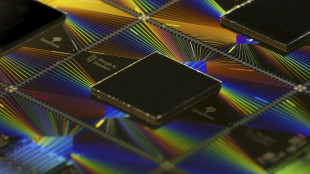
-
 WTO hikes 2025 trade growth outlook but tariffs to bite in 2026
WTO hikes 2025 trade growth outlook but tariffs to bite in 2026
-
US Supreme Court hears challenge to 'conversion therapy' ban for minors

-
 Italy's Gattuso expresses Gaza heartache ahead of World Cup qualifier with Israel
Italy's Gattuso expresses Gaza heartache ahead of World Cup qualifier with Israel
-
EU targets foreign steel to shield struggling sector
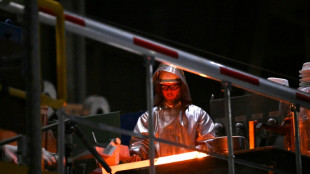
-
 Djokovic vanquishes exhaustion to push through to Shanghai quarterfinals
Djokovic vanquishes exhaustion to push through to Shanghai quarterfinals
-
Stocks, gold rise as investors weigh AI boom, political turmoil
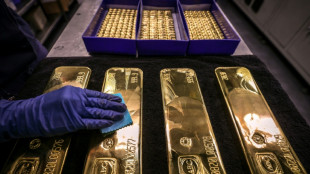
-
 Swiatek coasts through Wuhan debut while heat wilts players
Swiatek coasts through Wuhan debut while heat wilts players
-
Denmark's Rune calls for heat rule at Shanghai Masters

-
 Japanese football official sentenced for viewing child sexual abuse images
Japanese football official sentenced for viewing child sexual abuse images
-
'Veggie burgers' face grilling in EU parliament

-
 Trio wins physics Nobel for quantum mechanical tunnelling
Trio wins physics Nobel for quantum mechanical tunnelling
-
Two years after Hamas attack, Israelis mourn at Nova massacre site

-
 German factory orders drop in new blow to Merz
German factory orders drop in new blow to Merz
-
Man City star Stones considered retiring after injury woes

-
 Kane could extend Bayern stay as interest in Premier League cools
Kane could extend Bayern stay as interest in Premier League cools
-
Renewables overtake coal but growth slows: reports


The feline frontier: NASA sends cat video from deep space
NASA on Monday announced it had used a state-of-the-art laser communication system on a spaceship 19 million miles (31 million kilometers) away from Earth -- to send a high-definition cat video.
The 15-second meow-vie featuring an orange tabby named Taters is the first to be streamed from deep space, and demonstrates it's possible to transmit the higher-data-rate communications needed to support complex missions such as sending humans to Mars.
The video was beamed to Earth using a laser transceiver on the Psyche probe, which is journeying to the main asteroid belt between Mars and Jupiter to explore a mysterious metal-rich object. When it sent the video, the spaceship was 80 times the distance between the Earth and Moon.
The encoded near-infrared signal was received by the Hale Telescope at Caltech's Palomar Observatory in San Diego County, and from there sent to NASA's Jet Propulsion Laboratory (JPL) in Southern California.
"One of the goals is to demonstrate the ability to transmit broadband video across millions of miles. Nothing on Psyche generates video data, so we usually send packets of randomly generated test data," said Bill Klipstein, the tech demo's project manager at JPL.
"But to make this significant event more memorable, we decided to work with designers at JPL to create a fun video, which captures the essence of the demo as part of the Psyche mission."
Space missions have traditionally relied on radio waves to send and receive data, but working with lasers can increase the data rate by 10 to 100 times.
- Giant pounce for catkind -
The ultra-HD video took 101 seconds to send to Earth at the system's maximum bit rate of 267 megabits per second -- faster than most home broadband connections.
"In fact, after receiving the video at Palomar, it was sent to JPL over the internet, and that connection was slower than the signal coming from deep space," said Ryan Rogalin, the project's receiver electronics lead at JPL.
So why a cat video? First, there's the historic connection, said JPL. When American interest in television began growing in the 1920s, a statue of Felix the Cat was broadcast to serve as a test image.
And while cats may claim the title as man's best friend, few can dispute their number-one position when it comes to internet videos and meme culture.
Uploaded before launch, the clip shows Tabby, the pet of a JPL employee, chasing a laser light on a couch, with test graphics overlayed. These include Psyche's orbital path and technical information about the laser and its data bit rate.
While laser transmission has been demonstrated in low Earth orbit and as far away as the Moon, the Psyche mission is the first time it's been deployed in deep space. Aiming a laser beam from millions of miles away requires extremely precise "pointing," a major technical hurdle engineering teams had to solve.
The technology demonstration even needs to compensate for the fact that in the time it takes for light to travel from the spacecraft to Earth, both the probe and the planet will have moved -- so the uplink and downlink lasers need to adjust for the change accordingly.
P.Vogel--VB



